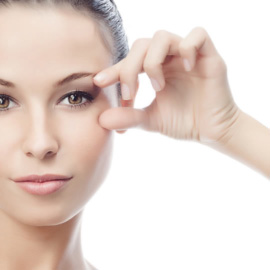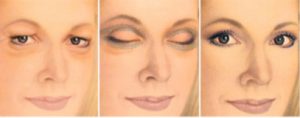 This is the name given to plastic surgery performed on the eyes It is sought after by patients who complain of tired-looking and aged eyelids. It aims to remove excess skin, bags of fat and sagging muscles of the upper eyelids, lower eyelids or both.
This is the name given to plastic surgery performed on the eyes It is sought after by patients who complain of tired-looking and aged eyelids. It aims to remove excess skin, bags of fat and sagging muscles of the upper eyelids, lower eyelids or both.
1. What type of anesthesia is used in blepharoplasty?
In most cases, we choose local anesthesia and sedation. A medication is applied so the patient can sleep quietly. Later, we conduct local infiltration with anesthetics so there is no pain.
2. What are the scars?
It is through incisions in the skin that we can remove the skin and fat excess. These incisions are approximated formed a “line” in the skin, which will make the scar. On the upper eyelids, that line is located in the fold that the eyelid makes when it opens. On the lower eyelids, it is situated just below the lashes. Because the palpebral region has thin skin, it heals excellently in most cases.
3. When will the stitches be removed?
The eyelid stitches will be removed between 4 and 7 days after surgery.
 4. What is the ideal age for eyelid surgery?
4. What is the ideal age for eyelid surgery?
There is no ideal age. Blepharoplasty is indicated when there is a skin or fat excess that bothers the patient and can be corrected by surgery.
5. Is the surgery very painful?
Usually there is no pain. When the patient wakes up from sedation, anesthesia will still be working on the point of surgery. We prescribe pain medications that patients can take at home, prophylactically, that is, before they can feel pain.
6. Do the eyes get very swollen and purple?
In the first 2 to 5 days, edema (swelling) and ecchymosis (purple) may be present. But, this will depend on how each patient responds to surgery. During this period, we recommend cold compresses on the area to ease these symptoms.
7. How long does the surgery last?
Usually from 1 to 2 hours.
8. How long will I need to stay in hospital?
From 3 to 6 hours after surgery.
9. Are the eyes covered after surgery?
We do not cover the region of the eyelids with bandages after blepharoplasty. We ask that cold compresses be applied in the early days, which can be done at home.

